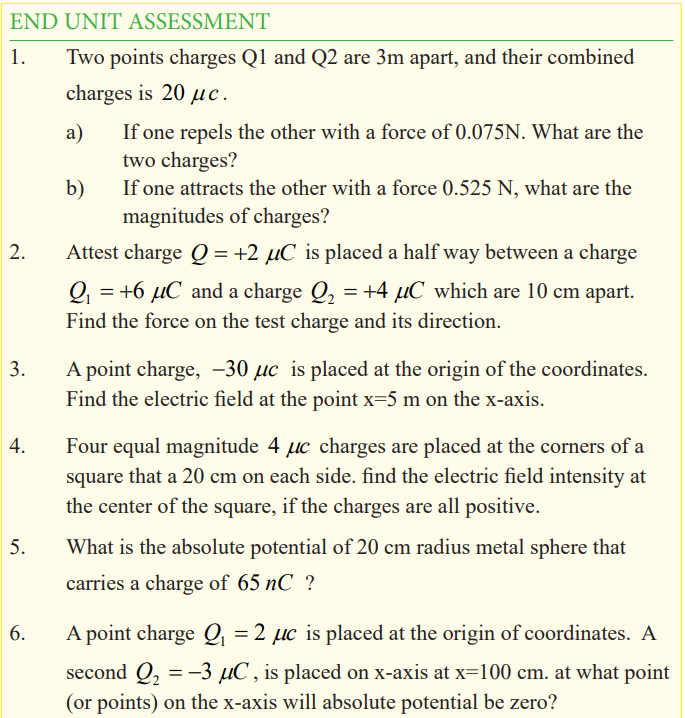Unit 9 : Electric field and electric potential
Key Unit Competence
Analyze the electric field and electric potential.
My goals
By the end of this unit, I will be able to:
* define electric field and electric potential.
* explain the relationship between electric potential and electric field
intensity.
* describe functioning of lightening arrestors.* identify the dangers of lightening and how to avoid them.
Introductory activity
When you pass nearby an electric power station, you may notice some signpost as shown in figure below.
This is to show that, the high voltage on the grid may affect people who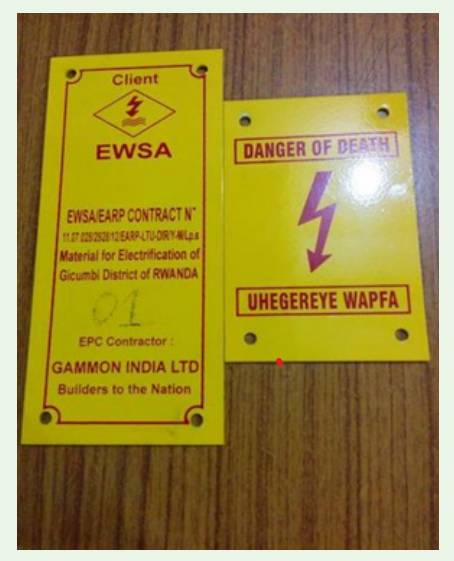
dares to approach it.
Questions
1. Discuss about the reasons behind the information given by the sign post.
2. Is it possible that electricity can affect someone without touching the
wires (cables)?
3. Discuss other areas where you can get such sign post and explain thereason behind.
Introduction
Have you ever heard sound due to lightening? If yes, what do you think was
the cause?If not, ask your friend in your class, at home, or neighbour about lightening.
Scientifically, lightening and thunder are effects of electric charges created inspace (will be discussed later).
Attraction and repulsion of charges
Activity 1
In this section, you will observe the characteristics of the two types of
charges, and verify experimentally that opposite charges attract and likecharges repel.
Equipment
* Two lucite rods
* One rough plastic rod
* Stand with stirrup holder
* Silk cloth* Cat’s fur
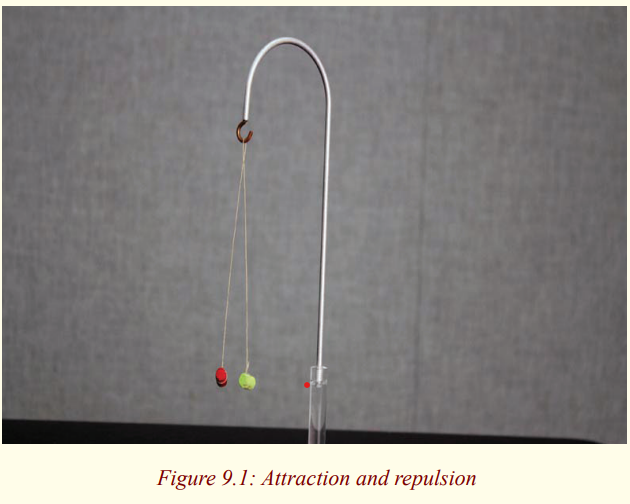
Procedure
1. Charge one lucite rod by rubbing it vigorously with silk. Place the
rod into the stirrup holder as shown in Figure.
2. Rub the second lucite rod with silk, and bring it close to the firstrod
3. What happens? Record the observations in your notes.
4. Rub the rough plastic rod with cat’s fur, and bring this rod near the
lucite rod in the stirrup. Record your observations.
5. What do you conclude?
6. Note down observation in your notebook.
For reference purposes, according to the convention originally chosen by
Benjamin Franklin, the lucite rods rubbed with silk become positively charged,
and the rough plastic rods rubbed with cat’s fur become negatively charged.Hard rubber rods, which are also commonly used, become negatively charged.
Coulomb’s law
Activity 2
Materials
* Coulomb’s Law apparatus
* Electrophorus (The electrophorus is a simple electrostatic induction
device. It’s an inexhaustible source of charge”).
* Silk cloth.* A computer for the graph and quick calculation.
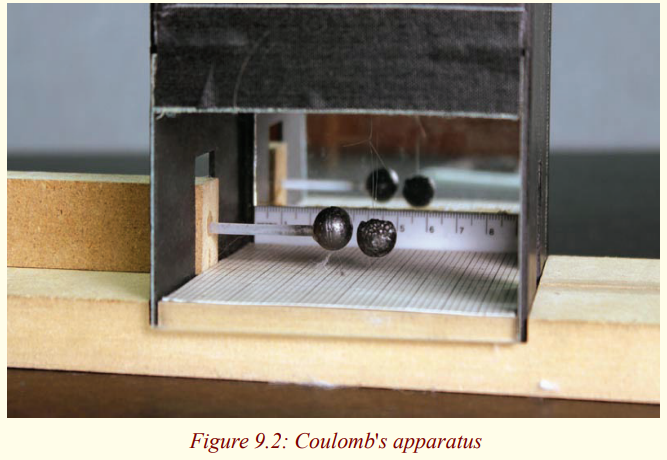
Procedure
1. Take a moment to check to position of the hanging ball in your
Coulomb apparatus. Look in through the side plastic window. The
hanging ball should be at the same height as the sliding ball (i.e.
the top of the mirrored scale should pass behind the centre of the
hanging pith ball, as in Figure 10.3 below). Lift off the top cover
and look down on the ball. The hanging ball should be centred on
a line with the sliding balls. If necessary, adjust carefully the finethreads that hold the hanging ball to position it properly.
2. Charge the metal plate of the electrophorus in the usual way by
rubbing the plastic base with silk, placing the metal plate on thebase, and touching it with your finger.
3. Lift off the metal plate by its insulating handle, and touch itcarefully to the ball on the left sliding block.
4. Slide the block into the Coulomb apparatus without touching the
sides of the box with the ball. Slide the block in until it is close to
the hanging ball. The hanging ball will be attracted by polarization,
as in Section III of this lab. After it touches the sliding ball, the
hanging ball will pick up half the charge and be repelled away.
Repeat the procedure if necessary, pushing the sliding ball up untilit touches the hanging ball.
5. Recharge the sliding ball so it produces the maximum force, and
experiment with pushing it towards the hanging ball. The hangingball should be repelled strongly.
6. You are going to measure the displacement of the hanging ball. You
do not need to measure the position of its centre, but will record
the position of its inside edge. Remove the sliding ball and record
the equilibrium position of its inside edge that faces the sliding
ball, which you will subtract from all the other measurements todetermine the displacement d.
7. Put the sliding ball in, and make trial measurements of the inside
edge of the sliding ball and the inside edge of the hanging ball. The
difference between these two measurements, plus the diameter of
one of the balls, is the distance r between their centres. Practice
taking measurements and compare your readings with those of your
lab partner until you are sure you can do them accurately. Try toestimate measurements to 0.2 mm.
8. Take measurements, and record the diameter of the balls (by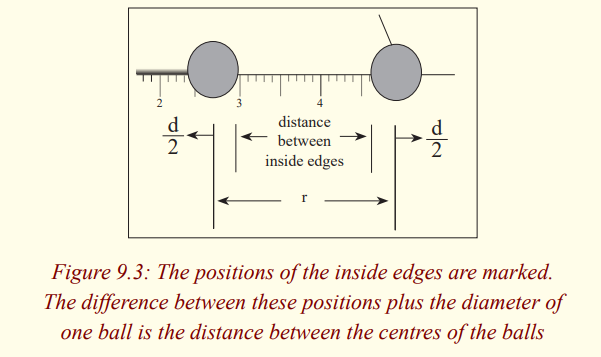
sighting on the scale).
9. Remove the sliding ball, and recheck the equilibrium position ofthe inside edge of the hanging ball.
10. You can record and graph data in Excel or by hand (although if
you work by hand, you will lose the opportunity for 2 mills of
additional credit below). Recharge the balls as in steps 1 – 4,
and record a series of measurements of the inside edges of the
balls. Move the sliding ball in steps of 0.5 cm for each newmeasurement.
11. Compute columns of displacements d (position of the hanging ball
minus the equilibrium position) and the separations r (difference
between the two recorded measurements plus the diameter of oneball).
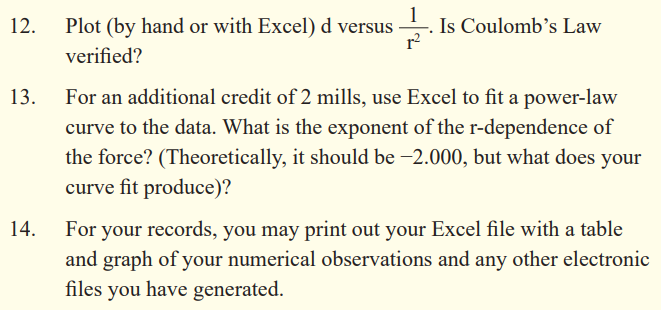
Knowledge of the forces that exist between charged particles is necessary for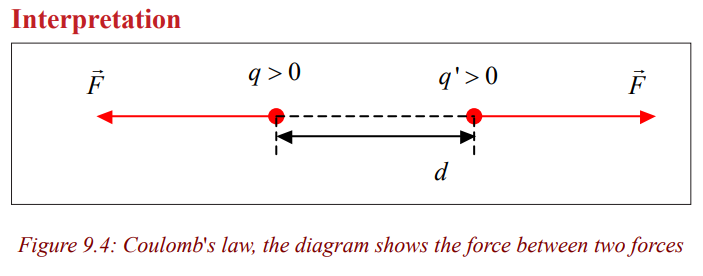
an understanding of the structure of the atom and of matter. The magnitude of
the forces between point charges was first investigated quantitatively in 1785by Coulomb, a French scientist. The law he discovered is stated as follows:
“The force between two point charges is directly proportional to the
product of charges divided by the square of their distance apart”.
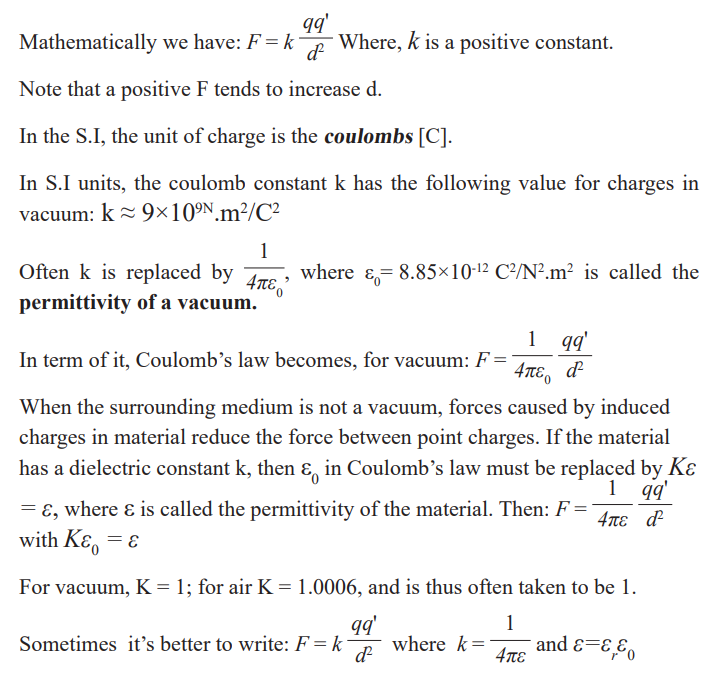
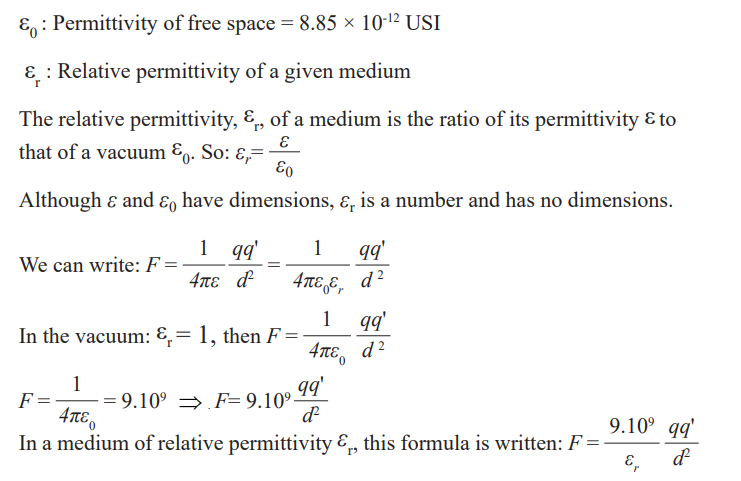
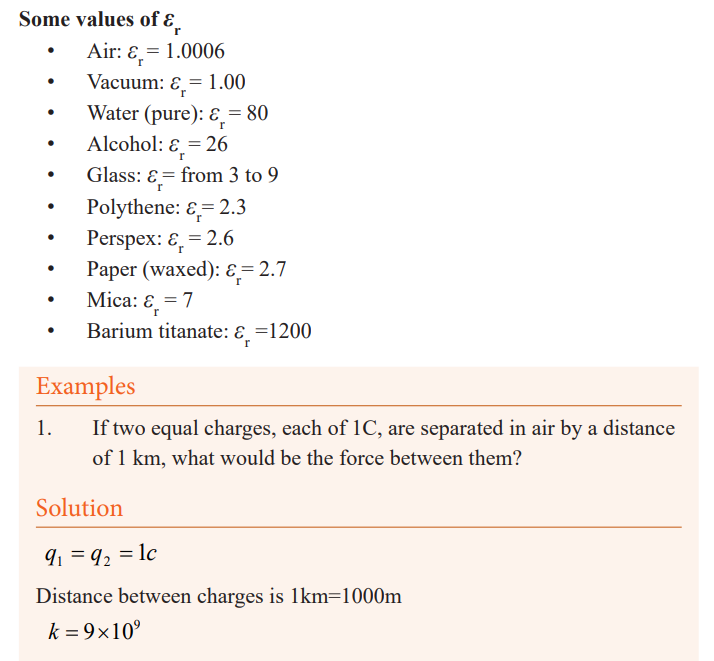
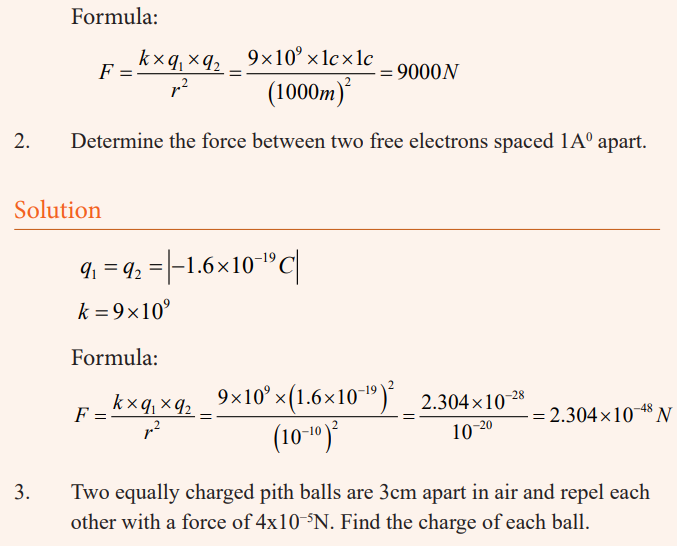

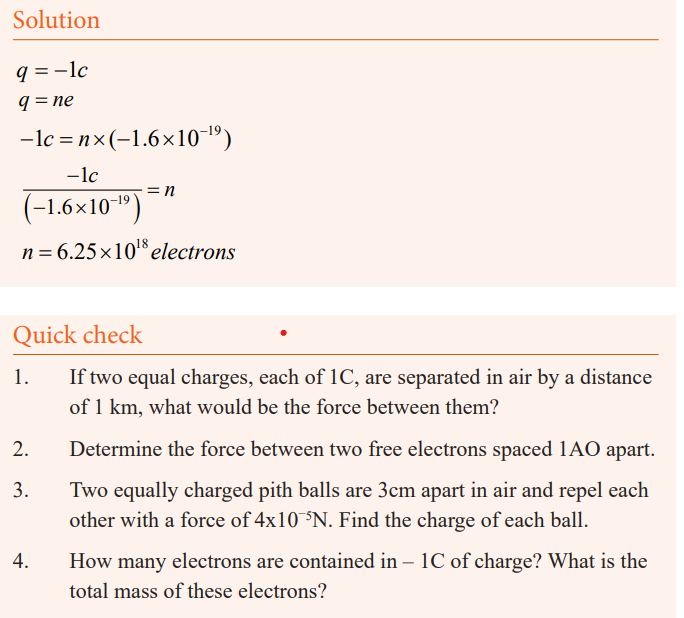
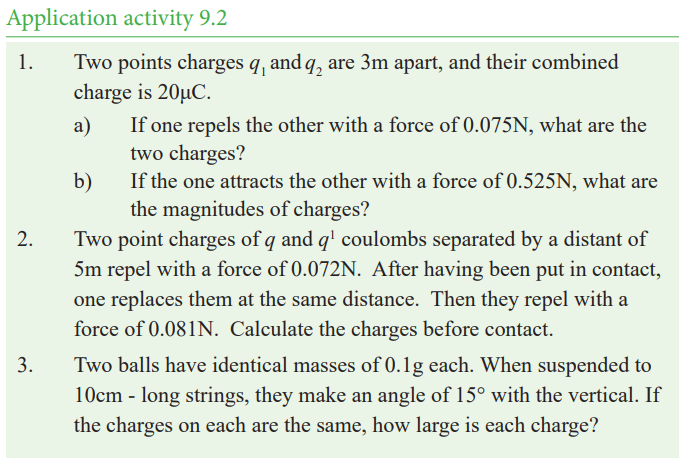
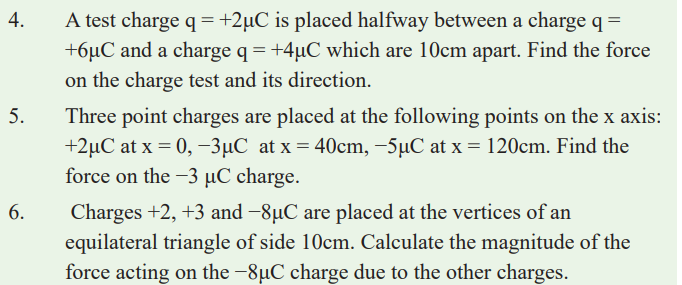
Electric field
Notions and definitions
Questions to think about
a) You have learned about Coulomb’s law and you have seen
that when an electric charge is brought near to another, there
is an attractive or a repulsive force. Does that force acts whencharges are in contact or it acts even at a certain distance?
b) If so, what can be the reason?
c) Does that force increase or decrease when the distancebetween charges increases?
After responding to those questions, you’ll see that around an electric charge
is a region so that when another charge is placed in it, it undergoes an electricforce. That region is called electric field created by the first charge.
An electric field can be defined as a region where an electric force is obtained.It’s a region where an electric charge experiences a force.
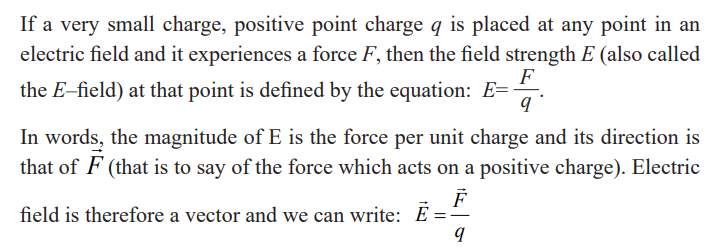
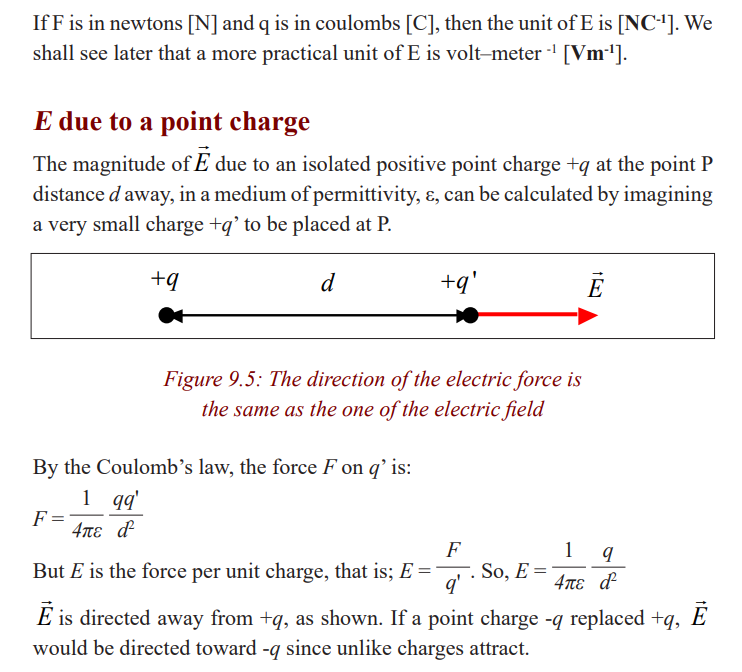
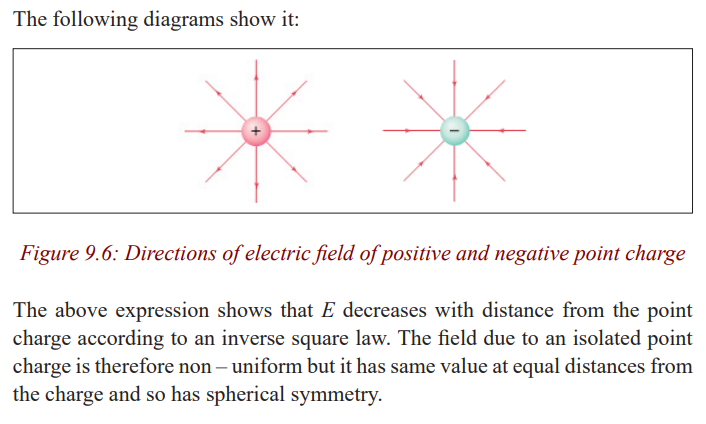
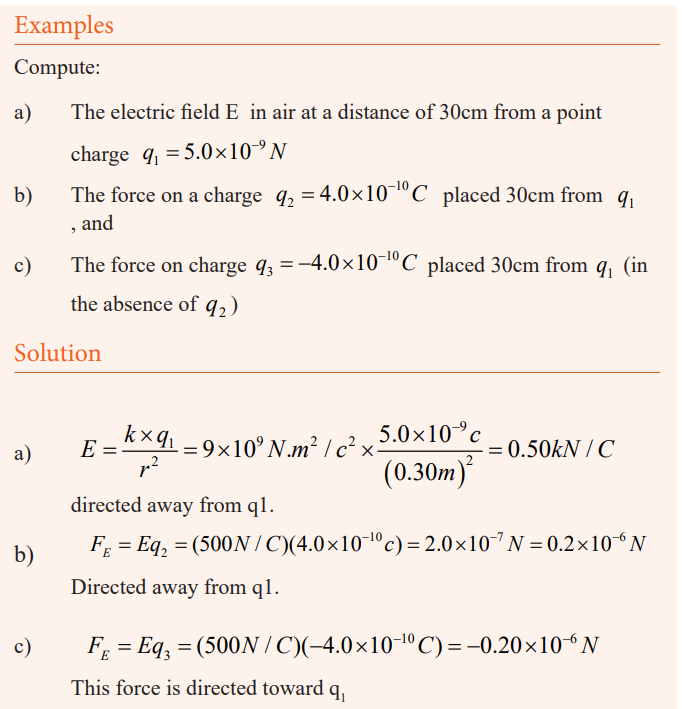
Field lines (lines of force)
Activity 4: Lab zone
Existence of field lines
This shows the shape of electric fields, in much the same way that magneticfields are demonstrated with iron filings.
Materials
* Power supply, EHT, 0-5kV. * Electric fields apparatus.* Semolina. * Castor oil.
Procedure
a) Fill the electrode unit with a layer of castor oil to a depth
of about 0.5cm. Sprinkle a thin layer of semolina over the
surface. (A thin piece of glass tubing drawn out to give a
fine pointed stirrer is helpful so that the semolina is evenly
distributed.) It is better to start with too little semolina than
to start with too much. You can always increase the quantitylater.
b) Place the electrodes in the castor oil. Connect the positive
and negative terminals of the EHT power supply to the
electrodes. Adjust the supply to give 3,000 to 4,000 volts.
When the voltage is switched on, the field lines will beclearly visible.
c) Try electrodes of different shapes. For example, one can be
a ‘point’ electrode whilst the other is a plate, or two point
electrodes can be used. A wire circular electrode with a
point electrode at the centre will show a radial field. The
field with two plates quite close together should also beshown.
A line of force or field lines is defined as a line such that the tangent to it at a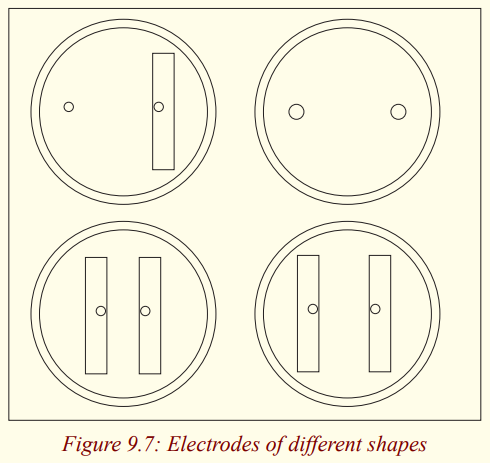
point is in the direction of force on a small positive charge placed the point.
Arrows on the lines of force show the direction of the force on a positivecharge; the force on a negative charge.
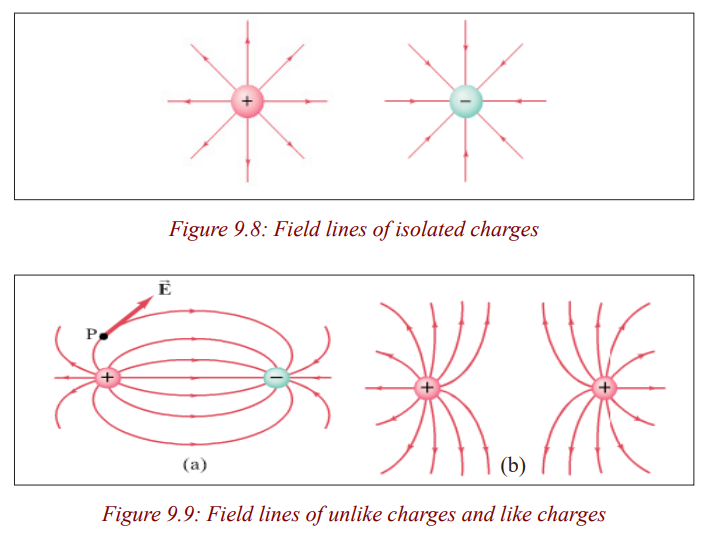

Electric field due to a distribution of electric charges
Activity 5
Electric field due to a distribution of charges
Materials
* A sheet of paper
* A pen* A ruler
Procedure
1. Represent a distribution of charges where you have charges of
different signs.
2. Represent a point A where you want to find the total electric field.
3. At the point, A represents directions of electric fields vectors
produced by each charge.
4. Do the sum of electric fields. Remember that an electric field is
a vector. When they make a certain angle between them, use the
method of parallelogram. When they have the same direction or
opposite directions, use the appropriate method.
5. Establish a mathematical relation of the total electric field due to thedistribution of charges.
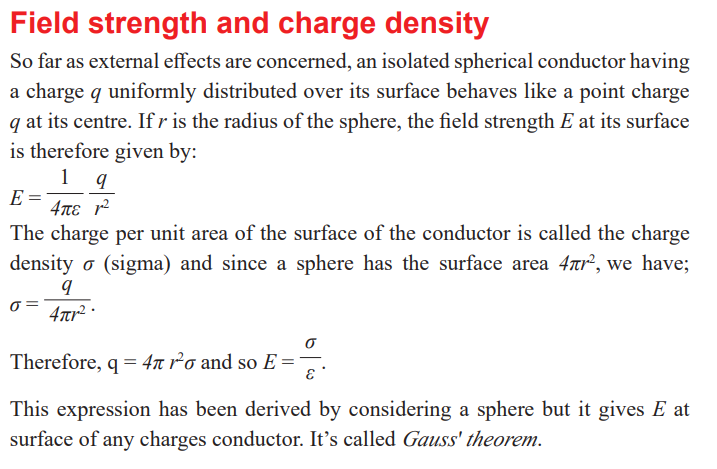

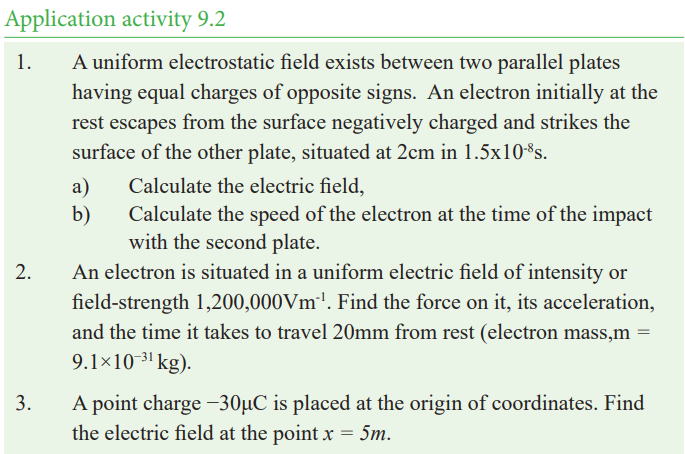

Potential difference
Work of electric force
Activity 6
Find the expression of the work done by an electric force
a) When can we say that we have a uniform electric field?
b) Draw a diagram showing two plates of opposite signs (the left
plate is positive and the right one is negative) between which the
electric field is uniform.
c) Show the direction of field lines in the electric field.
d) Between the two plates, put a positive charge at a point A which
has to travel toward a point B in the field.
e) Represent the direction of the vector force on the line joining A and B.
f) Write down the expression of the force undergone by the charge.
g) What is the expression of the work done if the charge has to move
from A to B (in the final formula)?
Particles that are free to move, if positively charged, normally tend towards
regions of lower voltage (net negative charge), while if negatively chargedthey tend to shift towards regions of higher voltage (net positive charge).
However, any movement of a positive charge into a region of higher voltage
requires external work to be done against the field of the electric force, work
equal to that electric field would do in moving that positive charge the same
distance in the opposite direction. Similarly, it requires positive external work
to transfer a negatively charged particle from a region of higher voltage to aregion of lower voltage.
The electric force is a conservative force: work done by a static electric field is
independent of the path taken by the charge. There is no change in the voltage
(electric potential) around any closed path; when returning to the startingpoint in a closed path, the net of the external work done is zero.
Potential in a field
Activity 7
Understanding the potential in a field
1. What kind of energy has a body when it’s held above the earth? If
the body has to move under the force of gravity, does it move froma point of great height to one of less or it’s the inverse?
2. Do you agree or not that points in the earth’s gravitational fieldhave potential values depending on their heights?
3. According to you, can this theory be similar to the one establishedfor electric field? Explain.
4. For charges, instead of saying gravitational potential for
gravitational field, can we say electric potential for the case ofelectric field? Explain.
5. Can points around the charge be said to have electric potential?
6. How can we define the electric potential at a point?
Potential generally refers to a currently unrealized ability. The term is used in
a wide variety of fields, from physics to the social sciences to indicate things
that are in a state where they are able to change in ways ranging from thesimple release of energy by objects to the realization of abilities in people.
Although the concept of electric potential is useful in understanding electrical
phenomena, only differences in potential energy are measurable. If an electric
field is defined as the force per unit charge, then by analogy an electric potential
can be thought of as the potential energy per unit charge. Therefore, the work
done in moving a unit charge from one point to another (e.g., within an electriccircuit) is equal to the difference in potential energies at each point.
Potential difference, work, energy of charges
Activity 8
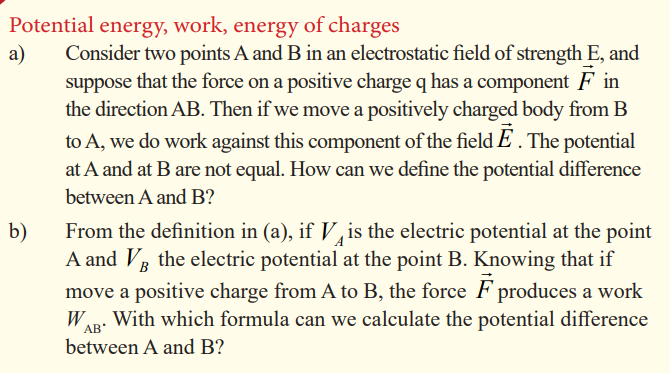
Electric potential is a location-dependent quantity that expresses the amount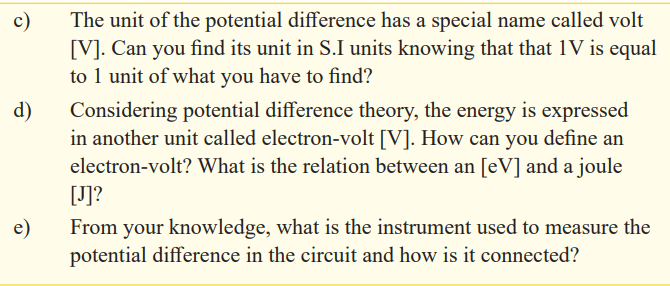
of potential energy per unit of charge at a specified location. When a Coulomb
of charge (or any given amount of charge) possesses a relatively large quantity
of potential energy at a given location, then that location is said to be a location
of high electric potential. And similarly, if a Coulomb of charge (or any given
amount of charge) possesses a relatively small quantity of potential energy
at a given location, then that location is said to be a location of low electric
potential. As we begin to apply our concepts of potential energy and electric
potential to circuits, we will begin to refer to the difference in electric potentialbetween two points.
Relation between E and V
Activity 9
Relation between E and V
1. What is the relation to find the work done by an electric force to
move a charge from A to B, knowing that the distance between A
and B is d?
2. What is the relation of the work using the potential difference?
3. Equalize the two relations and deduce the value of E. The relation
found is the one between E and V.
4. From the expression found, deduce the new unit of the electric field E.
5. Write down the relation between E and V found, express in
equation of V, write the electric field produced by a charge at a
point deduce the electric potential created by a charge at a pointsituated at a distance d from it.
The effect of any charge distribution can be described either in terms of
electric field or in terms of electric potential. Electric potential is often easier
to use since it is a scalar whereas electric field is a vector. There is an intimate
connection between the potential and the electric field. Let us consider the
case of a uniform electric field, such as that between the parallel plates (fig.)whose difference of potential is Vba.
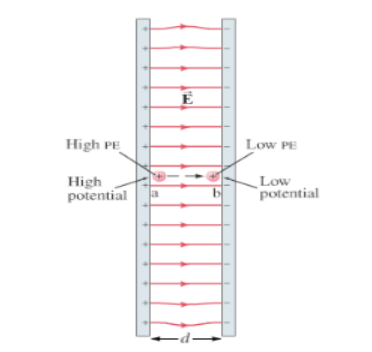
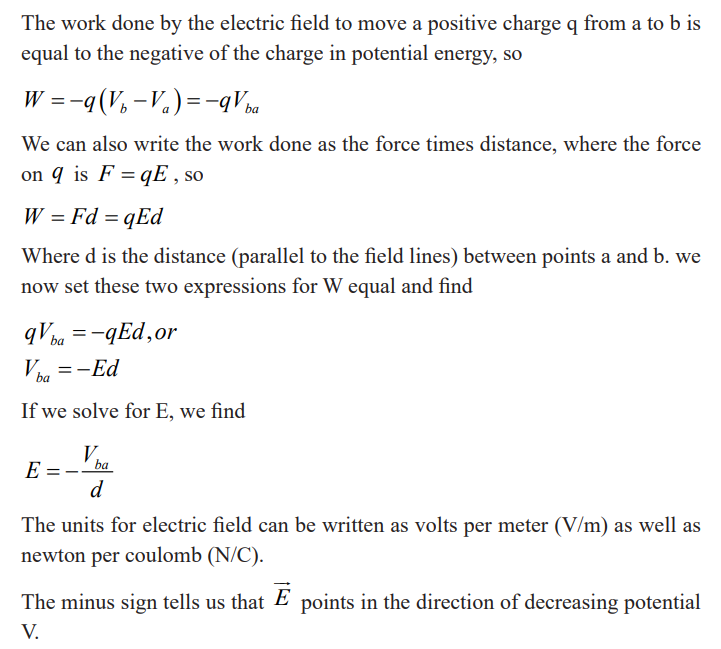
Examples
In figure below, the potential difference between the metal plates is 40v.
a) Which plate is at the higher potential?
b) How much work must be done to carry a +3.0C charge from B to
A? from A to B?
c) How do we know that the electric the electric field is in the
direction indicated?d) If the plate separation is 5.0mm. what is the magnitude of E?
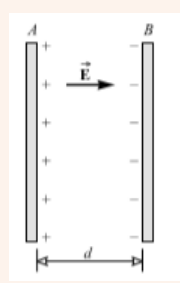
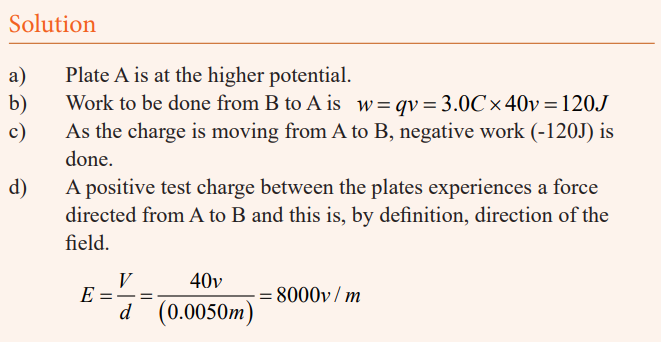
Motion of electric charges in an electric field
Activity 10
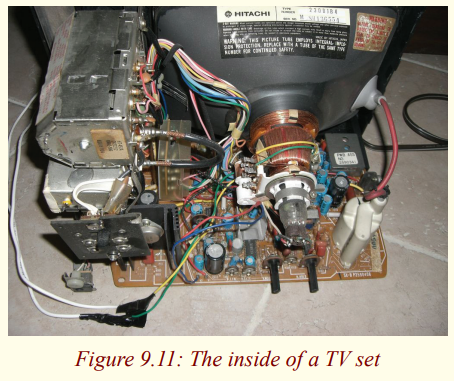
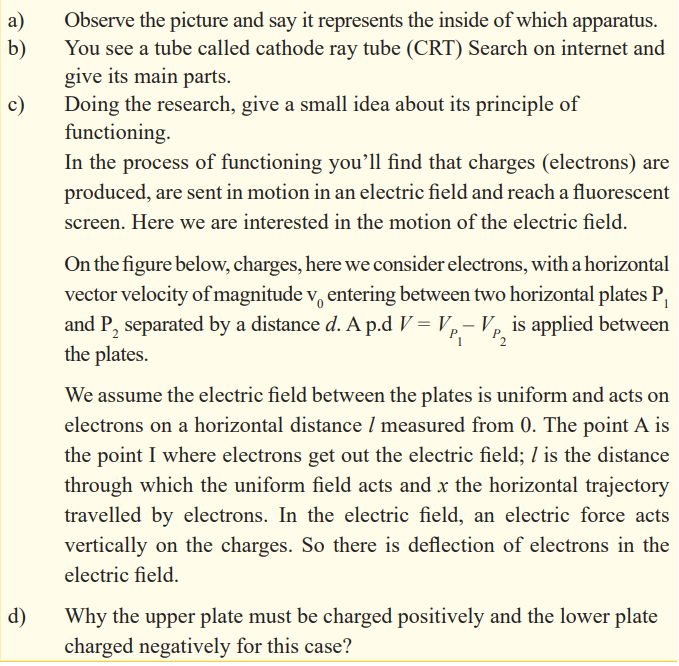
There are so many applications of cathode ray tube which is a practical example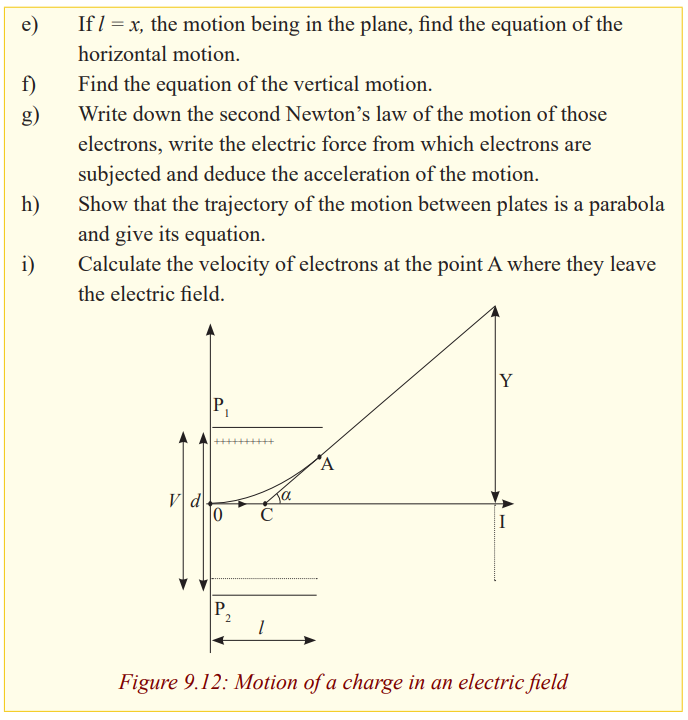
of the motion of electrons in an electric field in daily life. For example TVsets, oscilloscope, etc. use cathode ray tubes.

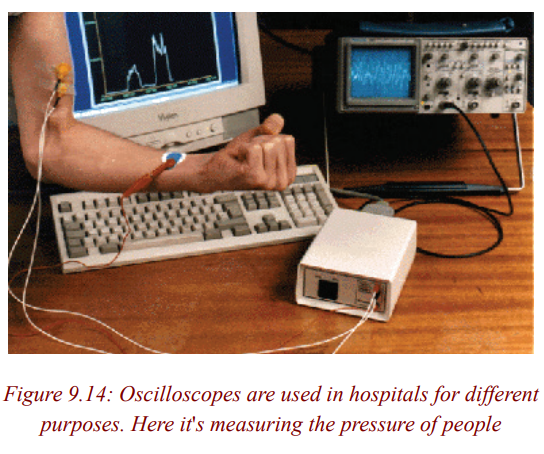
Lightening and lightening arrestor
Activity 11
Lightening and lightening arrestor
a) Surely, you have heard a thunder before the rainfall. What do
you observe in the sky during it?
b) According to you, this is due to what?
c) Is the fact observed dangerous?
d) If yes, do you know some consequences which you have
observed or heard?
e) If yes, is there a way to be protected from it?
f) Do some research on internet to know more about it andsubmit the result of your research to the teacher.
Some explanation
What you observe is called Lightening which is a sudden electrostatic
discharge (the sudden flow of electricity between two electrically charged
objects caused by contact, an electrical short, or dielectric breakdown) during
an electrical storm between electrically charged regions of a cloud (called intra-
cloud lightening or IC), between that cloud and another cloud (CC lightening),
or between a cloud and the ground (CG lightening). The charged regions in the
atmosphere temporarily equalise themselves through this discharge referred
to as a strike if it hits an object on the ground. Although lightening is always
accompanied by the sound of thunder, distant lightening may be seen but be
too far away for the thunder to be heard. Lightening strikes can be damagingto buildings and equipment, as well as dangerous to people.
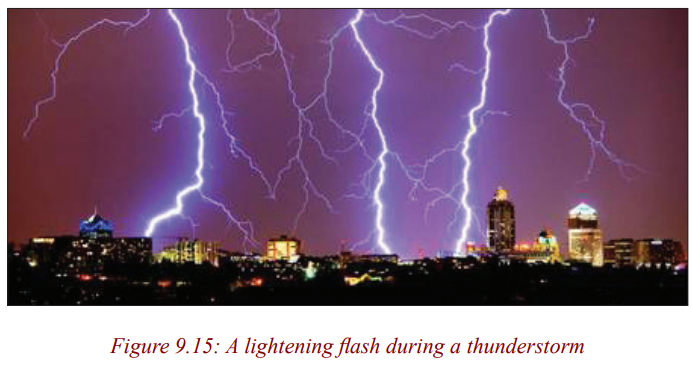
Buildings often use a lightening protection or lightening rod system consisting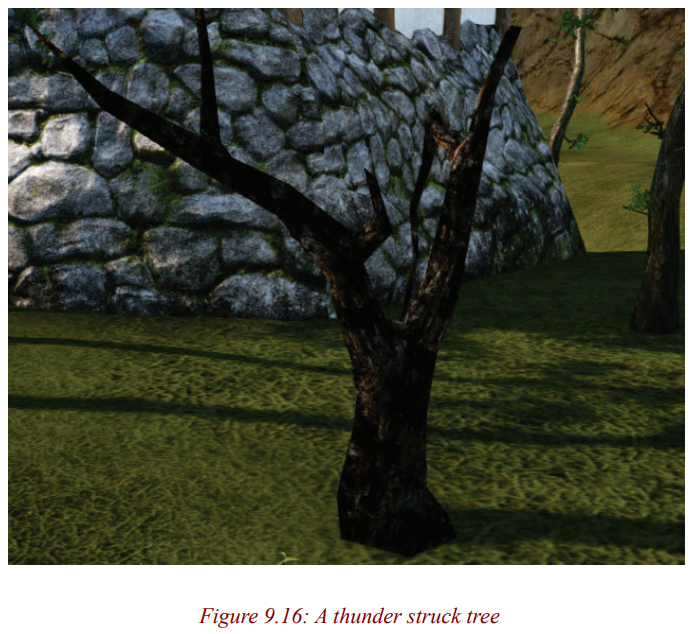
of a lightening rod (also called a lightening conductor) and metal cables to
divert and conduct the electrical charges safely into the ground. Another form
of lightening protection system creates a short circuit to prevent damage to
equipment. The electrically conducting metal skin of commercial aircraft isisolated from the interior of to protect passengers and equipment.
Often, the lightening protection is mounted on top of an elevated structure,
such as a building, a ship, or even a tree, electrically bonded using a wire
or electrical conductor to interface with ground or “earth” through an electrode,
engineered to protect the structure in the event of lightening strike. If lightening
hits the structure, it will preferentially strike the rod and be conducted to the
ground through the wire, instead of passing through the structure, where it
could start a fire or cause electrocution. Lightening rods are also called finials,air terminals or strike termination devices.
In a lightening protection system, a lightening rod is a single component of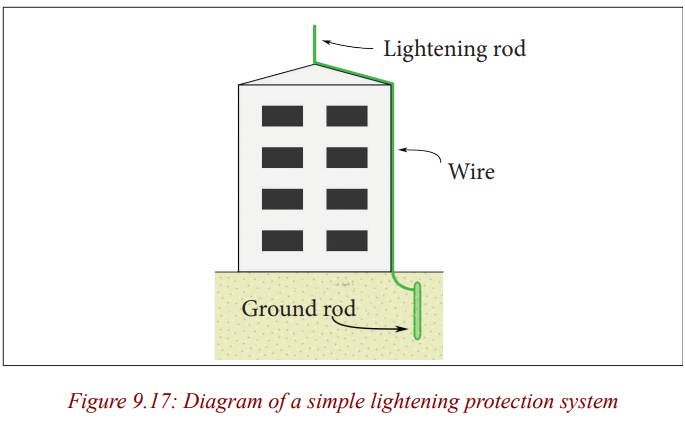
the system. The lightening rod requires a connection to earth to perform its
protective function. Lightening rods come in many different forms, including
hollow, solid, pointed, rounded, flat strips or even bristle brush-like. The main
attribute common to all lightening rods is that they are all made of conductive
materials, such as copper and aluminum. Copper and its alloys are the mostcommon materials used in lightening protection.
